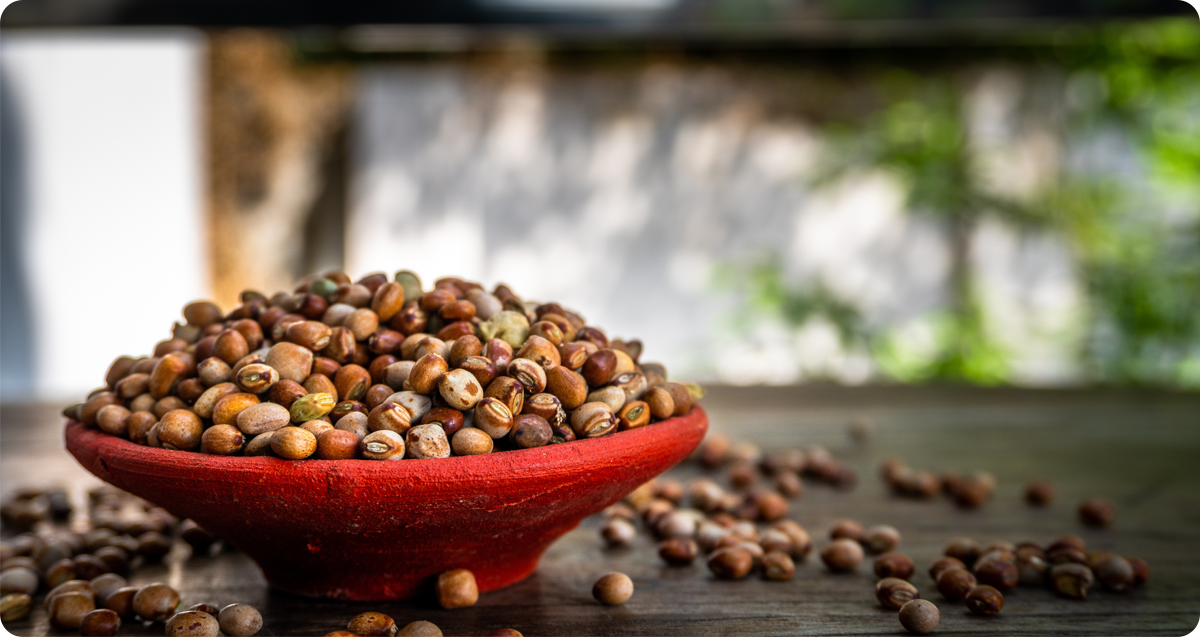July 15, 2025
Tur dal prices plunged — and no one’s panicking. Why what looks like a collapse may just be a return to normal.


“Pigeon peas are trading at around $725 per ton — nearly half their 2024 peak — as supply stabilizes and yellow pea imports reshape demand.”
Among the wide variety of pulses consumed across India, pigeon peas (“tur dal”) have consistently held a special place. According to Mr. Sunil Kumar Singh, former Additional Managing Director at NAFED, speaking at the Pulses 25 Conference in Singapore: “Among all pulses in India, pigeon peas hold the crown. If its price remains favorable, the Indian population will always prefer pigeon peas over any other pulse.”
This makes pigeon peas a critical commodity not just from a nutritional standpoint but also from a pricing and policy perspective. Over the past year, prices have seen a notable decline, moving from $1,470 per metric ton CNF from Myanmar to India on May 30, 2024, to $725 per ton CNF on June 26, 2025. This represents a reduction of $745 per ton or approximately 51%. While the magnitude of this price correction is significant, it is not necessarily unusual or unexplainable. Instead, it offers us a chance to examine what contributed to this shift.
Jahid Nagarwala from Alfa Group-Agrox provided a comprehensive overview of how the pigeon pea market evolved over the past few years. He explained that, before 2020–2021, African pigeon pea prices ranged from $600 to $650, occasionally reaching $700 to $750. Starting in 2021, India began experiencing supply shortages, while African supply remained around 500,000 to 600,000 tons. This persistent shortfall extended through 2024, with India continuing to depend heavily on imports. As a result, prices gradually rose, eventually reaching around $1,250 per ton from African origins.
Mr. Nagarwala noted that by mid-2024 reports began circulating in the Indian market predicting that Africa would supply approximately 1 million tons. When combined with Myanmar’s estimated 350,000 tons and India’s domestic production, total availability was projected to exceed 4.5 million tons—sufficient for the Indian market’s needs. Prices subsequently began to correct, returning toward historical norms rather than simply declining.
He also emphasized the role of government policy in this transition. The Indian government allowed the free import of yellow peas, which were significantly cheaper than pigeon peas. This led to a shift in consumption, particularly among low price and sensitive sectors like local dhaba, restaurants and catering etc, which began substituting yellow pea dal for tur dal. This added additional downward pressure on pigeon pea prices.
In Mr. Nagarwala’s view, last year’s price spike was driven primarily by a prolonged period of supply constraints. The subsequent correction was a natural result of improved supply and policy interventions, which remain in place today. Decent supply levels, abundant yellow pea stocks, and ongoing permission for imports have collectively helped stabilize pigeon pea prices.
Samir Esmail from Afrisian Ginning offered historical context to the price levels we are now seeing. According to Mr. Esmail, the ten-year average for pigeon pea prices to India falls between $600 and $700, suggesting that current levels are within a normal and sustainable range.
He explained that the price spikes observed last year were part of a broader pulse market dynamic, characterized by shortages and speculative behavior. Many companies sought to build stocks in anticipation of further scarcity, which inflated prices not just for pigeon peas but for other pulses as well. At the time, desi chickpeas, for example, were being traded at $900 to $940 per ton.
Mr. Esmail added that prices across the pulse market have softened this year, reflecting subdued demand and improved availability. This broader market environment has also influenced pigeon pea pricing.
Both Mr. Nagarwala and Mr. Esmail stressed that the current market situation should not be seen as unexpected or disruptive. Rather, it reflects a return to more balanced conditions after a period of unusually high prices.
Another noteworthy factor remains the ongoing allowance of yellow pea imports into India. As both experts noted, the availability of yellow peas at lower costs continues to support substitution in the food industry. This trend has contributed to sustained price correction in pigeon peas and will likely continue for as long as yellow pea imports remain open.
In conclusion, the pigeon pea market is showing signs of normalization. The $725 per ton CNF pricing is reflective of adequate supply and moderated demand. Rather than viewing this change as dramatic or alarming, it is more accurate to see it as a rebalancing after a period of tightness and heightened prices. The fundamentals that had once driven prices up have now given way to a more stable environment.
Disclaimer: The opinions or views expressed in this publication are those of the authors or quoted persons. They do not purport to reflect the opinions or views of the Global Pulse Confederation or its members.